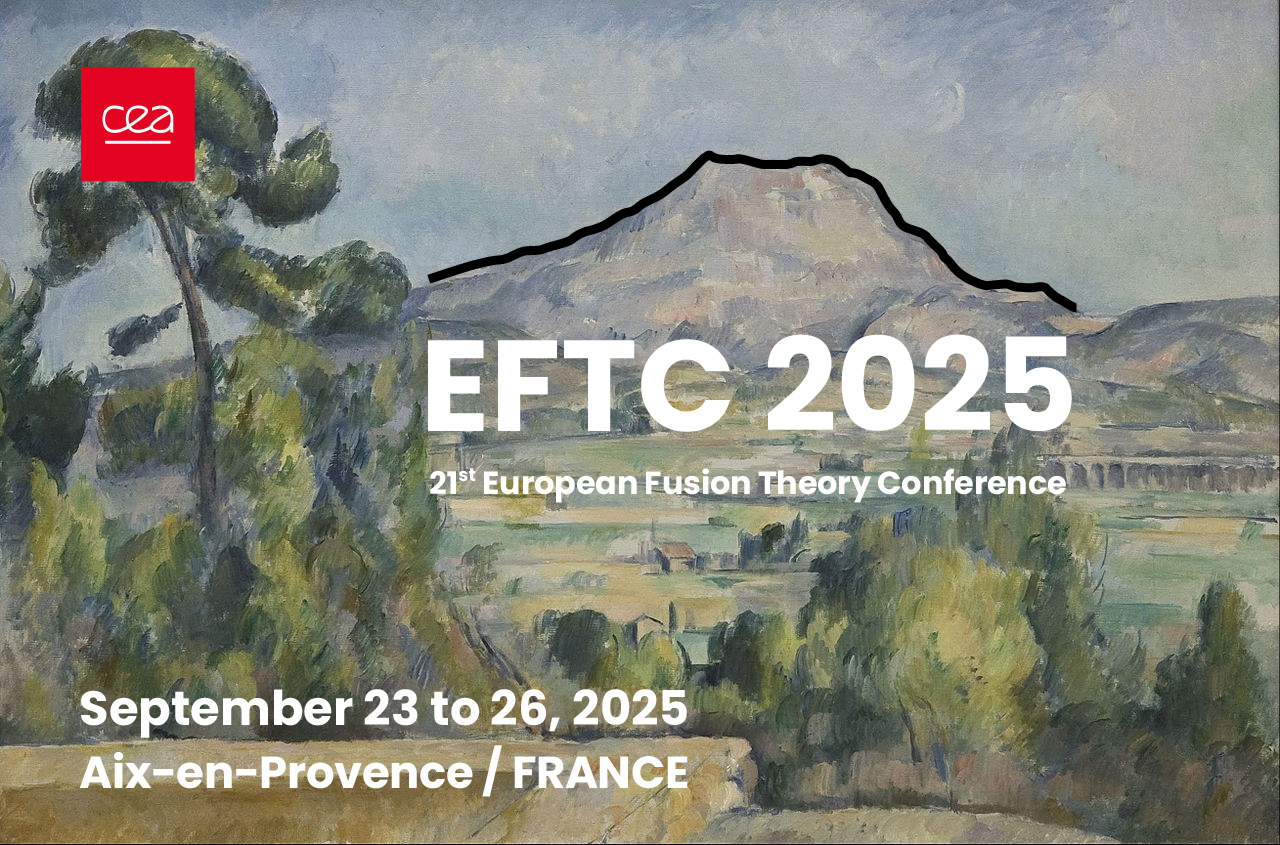Speaker
Description
We present a novel method for calculating particle and energy flows in the 6D kinetic Vlasov equation with adiabatic
electrons. This approach enables the determination of energy and particle fluxes from lower-order moments of
the distribution function, such as the kinetic energy density and the momentum transfer tensor. In addition to this
decomposition, we derive the residual Poynting flux in the electrostatic limit and evaluate its contribution to the
total energy flux.
The results indicate that energy fluxes are primarily dominated by the 𝑬 × 𝑩 heat flux, with additional contributions
from the momentum transfer tensor and the Poynting flux. Our analysis reveals an additional contribution that
is negligible for low-frequency gyrokinetic modes but may become significant for high-frequency modes, such as
ion Bernstein waves (IBWs). This technique offers two major advantages. First, it allows for the identification
of individual contributions to the energy flux, including the 𝑬 × 𝑩 heat flux known from gyrokinetics, thereby
establishing a direct connection to established theory. Second, it reduces inherent gyro-oscillations in both energy
and particle fluxes by decomposing the expressions into components with fewer gyrooscillations, allowing for more
reliable diagnostics. [2].
The resulting expressions for the energy and particle fluxes are compared with simulation results of ion temperature
gradient (ITG) turbulence, using both local and nonlinear treatments of the temperature gradient. By comparing
the analytical expressions with the simulated fluxes and the decay of the initial temperature profile, we demonstrate
good agreement with the sum of the individual contributions, thereby confirming the validity of the proposed
method.
Previous research [1, 3] has shown that the fully kinetic system exhibits behaviors beyond the scope of gyrokinetics
in scenarios with large density and temperature gradients, such as those found at the edge of a tokamak during tran-
sition phases. A comprehensive understanding of all energy transport channels is therefore essential—particularly
when the model is extended to incorporate more detailed electron physics.
References
[1] M. Raeth and K. Hallatschek. High-frequency nongyrokinetic turbulence at tokamak edge parameters. Phys. Rev. Lett., 133:195101, Nov
2024.
[2] M. Raeth and K. Hallatschek. Energy balance for 6d kinetic ions with adiabatic electrons. Physics of Plasmas, 32(5), 2025.
[3] Mario Raeth. Beyond gyrokinetic theory: Excitation of high-frequency turbulence in 6d vlasov simulations of magnetized plasmas with
steep temperature and density gradients. PhD Thesis - University Library: Technical University of Munich, 2023.

